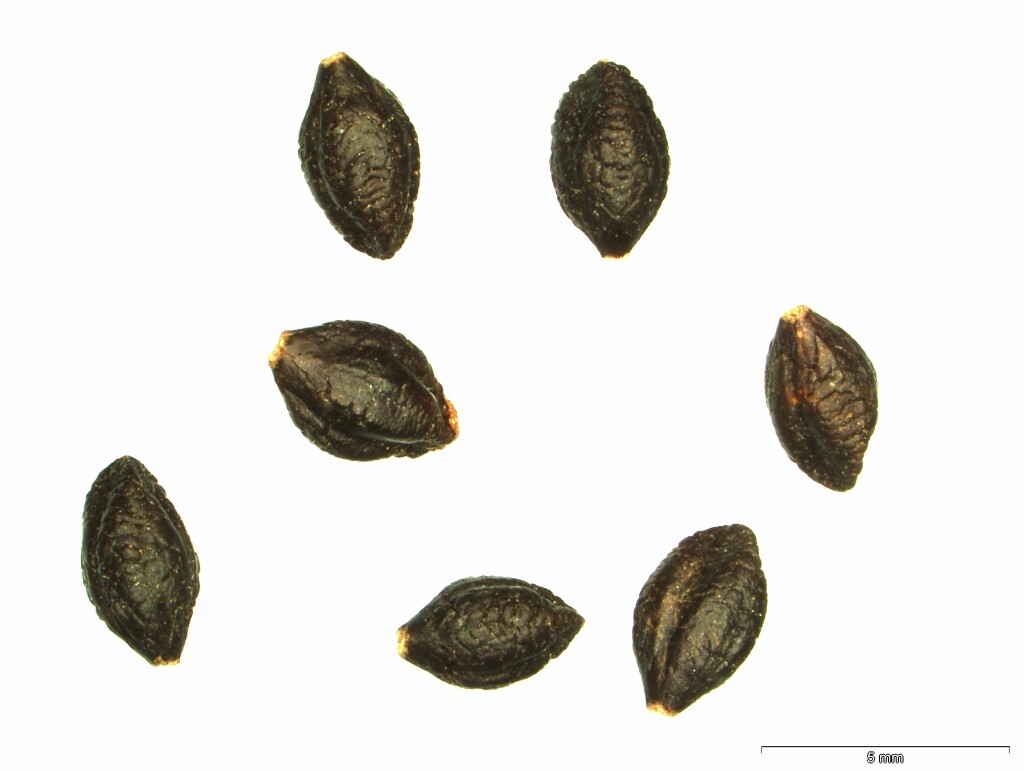Muehlenbeckia gunnii
(Hook.f.) Endl. Coastal LignumGlabrous twiner, ascending through other vegetation to 3 m high or more, stems brown, rather coarse. Leaves triangular, ovate, trullate or almost oblong, 2–6 cm long, 8–20 mm wide, apex obtuse to acute, base truncate, hastate or sagittate, more or less glossy on upper surface; petioles c. 3–12 mm long. Flowers in small clusters within interrupted spike-like or sometimes branched inflorescence c. 2–5 cm long, pedicels shortly exceeding the subtending bract; perianth segments 3–4 mm long, free almost to base, yellow-green, female flowers elongating to 5–7 mm in fruit. Nut ovoid, 4–5 mm long, trigonous near apex, broadly 3–6-grooved longitudinally toward base, finely transversely wrinkled all over, dark brown to black. Flowers most of year.
Brid, EGL. Also SA, Tas. In Victoria known only from coastal shrubland on dune limestone in the south-west near Cape Bridgewater and Port Campbell and a recent (2016) collection from scrub along the sandy shores of Dock Inlet near Bemm River.
In Tasmania, from where Muehlenbeckia gunnii was first described, it is a common component of wet montane forests away from the coast. On the Australian mainland, however, it appears to be a near-coastal species.
Walsh, N.G. (1996). Polygonaceae. In: Walsh, N.G.; Entwisle, T.J., Flora of Victoria Vol. 3, Dicotyledons Winteraceae to Myrtaceae, pp. 272–295. Inkata Press, Melbourne.
 Spinning
Spinning
